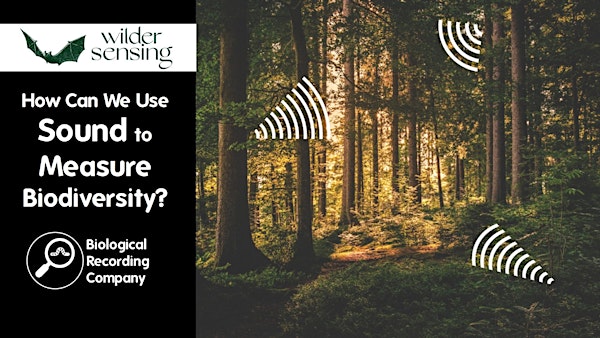How Can We Use Sound to Measure Biodiversity?
This free webinar will explore the potential pros and cons of using bioacoustics for measuring biodiversity.
Bioacoustics is a cross-disciplinary science that combines biology and acoustics, using the sounds produced by animals to investigate their biology and ecology.
Sound recorders can be positioned within a habitat to record the calls produced by birds and other animals, and these recordings can be analysed to establish their behaviours and which species are present. Artificial intelligence and evolving hardware are helping us to push the boundaries of what we can use this technology for, with the potential to use bioacoustics to establish species abundance and overall ecosystem health on the horizon.
It can be used for short and long-term measurements of biodiversity, including how species richness changes through the seasons and over the years. It also helps understand how birds are using a site, for example using bioacoustics to look at the site preferences of Skylarks.
This event will feature two presentations:
- How Can We Use Sound to Measure Nature? with Geoff Carss (Wilder Sensing)
- Using Sound to Understand How Biodiversity is Changing: The Story of Honeygar with Joe Hampson (Somerset Wildlife Trust)
- Panel discussion with Dr Dan Carpenter (Digital Ecology)
The live audience will have the opportunity to submit their questions to our speakers in a panel discussion following the presentations.
The presentations will be recorded and shared with those who booked alongside Q&A transcripts and any relevant links following the event.
This event is being delivered by the Biological Recording Company in partnership with Wilder Sensing, Wildlife Acoustics and NHBS.
This free webinar will explore the potential pros and cons of using bioacoustics for measuring biodiversity.
Bioacoustics is a cross-disciplinary science that combines biology and acoustics, using the sounds produced by animals to investigate their biology and ecology.
Sound recorders can be positioned within a habitat to record the calls produced by birds and other animals, and these recordings can be analysed to establish their behaviours and which species are present. Artificial intelligence and evolving hardware are helping us to push the boundaries of what we can use this technology for, with the potential to use bioacoustics to establish species abundance and overall ecosystem health on the horizon.
It can be used for short and long-term measurements of biodiversity, including how species richness changes through the seasons and over the years. It also helps understand how birds are using a site, for example using bioacoustics to look at the site preferences of Skylarks.
This event will feature two presentations:
- How Can We Use Sound to Measure Nature? with Geoff Carss (Wilder Sensing)
- Using Sound to Understand How Biodiversity is Changing: The Story of Honeygar with Joe Hampson (Somerset Wildlife Trust)
- Panel discussion with Dr Dan Carpenter (Digital Ecology)
The live audience will have the opportunity to submit their questions to our speakers in a panel discussion following the presentations.
The presentations will be recorded and shared with those who booked alongside Q&A transcripts and any relevant links following the event.
This event is being delivered by the Biological Recording Company in partnership with Wilder Sensing, Wildlife Acoustics and NHBS.
How Can We Use Sound to Measure Nature?
Geoff Carss (Wilder Sensing)
Geoff will introduce how the science of bioacoustics is used to monitor and measure biodiversity, delving into the current limitations and potential applications. We will explore how sound has been used to identify species and recent innovations such as Merlin and BirdNET together with scalable approaches for short and long term monitoring. Featured on Springwatch 2024 episode 11.
Using Sound to Understand How Biodiversity is Changing: The Story of Honeygar
Joe Hampson (Somerset Wildlife Trust)
Honeygar will be Somerset Wildlife Trust's first ‘wilded’ site - managed very differently to our nature reserves and a major project for the Trust, which will happen over many years. Over time, we hope it will become a place which inspires those who visit, whether other landowners, local people or visitors from further afield.
Joe will provide a short history of Honeygar and delve into the details of the acoustic project that's been running there for 18 months and has 1.5 million records uncovering all kinds of insights. He'll explain how A bioacoustics specialist will introduce how the science of bioacoustics is used to monitor and measure biodiversity, delving into the current limitations and potential applications. We'll then hear a case study from a conservationist who is using cutting-edge bioacoustics to monitor and conserve the birds across their sites.
